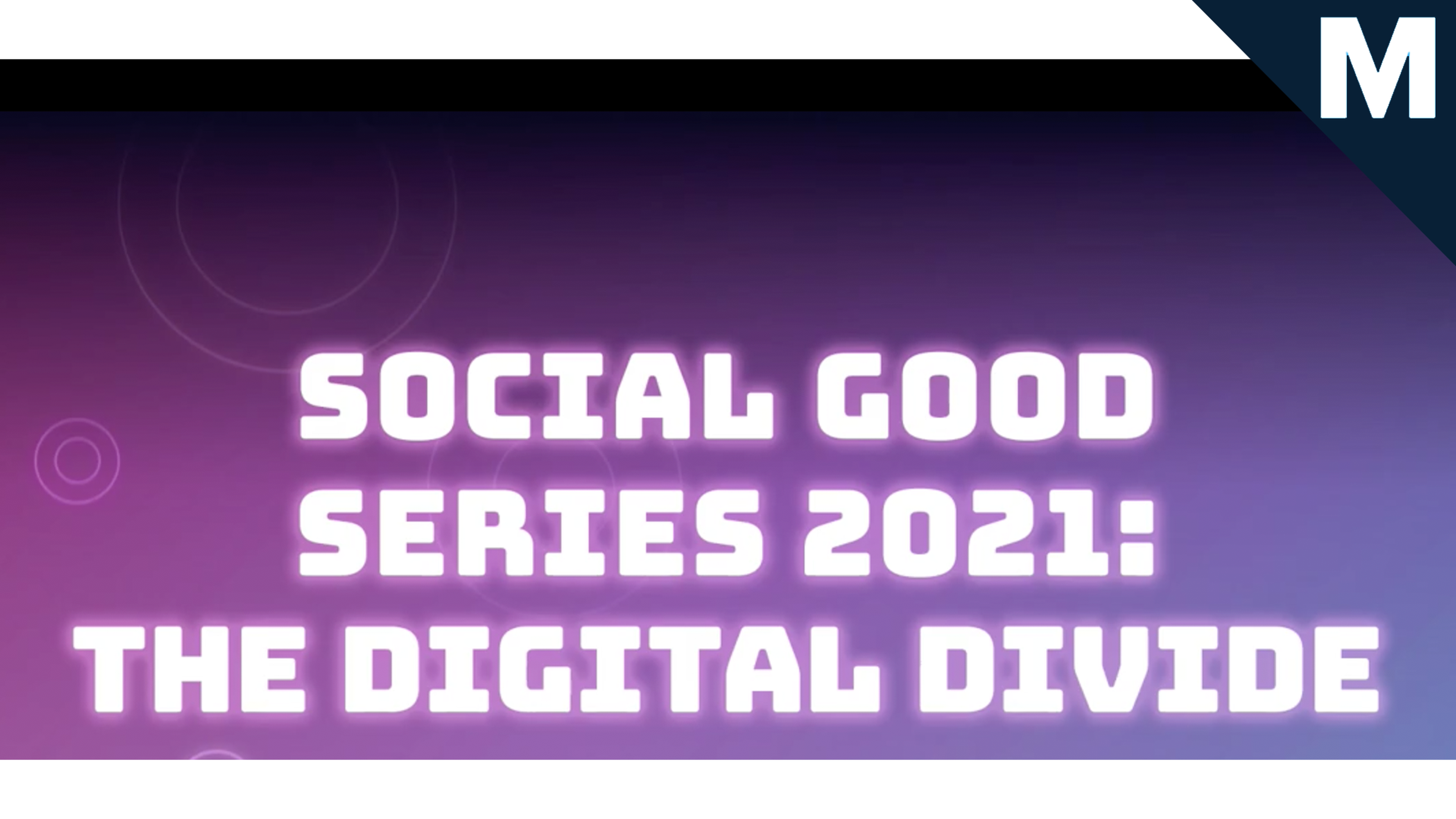March is all about the digital divide for Mashable’s Social Good Series, as we address the ways technology has brought some of us closer while also leaving many of us behind.
Moderator Dr. Chris Emdin, associate professor at Columbia University’s Teachers College and author of For White Folks Who Teach In the Hood and the Rest of Ya’ll Too, was joined by four panelists to discuss the digital divide as it manifests in America’s education system.
Dana Floberg is the policy manager at the advocacy group Free Press, which promotes free and open internet access through federal policy and on-the-ground activism.
Becky Pringle is a former educator of more than thirty years and the president of the National Education Association, an organization of educational professionals that works to improve quality education access.
Dr. Maria Coady is a professor of second language education at the University of Florida and has worked on the ground with rural and immigrant communities to promote biliteracy and bilingual education.
Lakisha Young is the cofounder and CEO of Oakland Reach, a parent-led advocacy organization that fights for access to high-quality schooling for underserved communities in California’s Bay Area.
The conversation began by discussing the role technology serves in how Americans access community, work, and education, especially during the COVID-19 lockdown. Both Floberg and Pringle reiterated that these difficulties are made worse by structural inequalities in areas like education and housing. Coady highlighted the specific needs of rural communities, which she says are frequently ignored by big policy makers.
Later in the panel, Floberg discussed where federal policy can acknowledge these on-the-ground realities. “Real people might not have an intimate understanding of the technical processes… but they know when their broadband bill is too high, they know when their kids can’t get online,” she explained. “People know and have an intimate understanding of the problems that they’re facing and the kinds of solutions that they individually need.”
She reiterated that “low-hanging fruit” policies can still have a huge impact on narrowing the digital divide. For example, federal data collection on pricing can help shine a light on socioeconomic disparities. And policies like the recent Emergency Broadband Benefit Program, which provides broadband access to low-income households, can put more power into the hands of people who have the most technological need.
Another issue to consider, according to Coady, is language. “We have millions of bilingual people in our country, yet we continue to think about English only,” she said. This makes technology even more inaccessible to many households. “We have multiple layers of challenges,” Coady explained. “Rural teachers and rural communities are really understanding that it’s not just about providing access… but place matters and language matters.”
To that point, the panelists and Emdin reiterated that the digital divide is not just the result of COVID-19’s reliance on online learning, but institutionalized barriers to underserved communities. “Its not the pandemic, it’s systemic,” Young said.
Young explained that educators need to innovate tailored solutions to the digital divide and utilize the new skills children have adapted in an age of social media and technology. But, importantly, “humanity needs to guide technology,” Young said. “It has to be driven by people’s needs and aspirations. It has to seem valuable to them.”
Wrapping up the conversation, Floberg explained that COVID-19 has put on display where we need to improve accessibility to make pandemic-era learning easier and where tech can build a future that reflects diverse communities.
Pringle said we should use those realities as a “north star” to build a new, inclusive education system. She said this means transforming public education into “a racially and socially just and equitable system that prepares every student — every one —to succeed in a diverse and independent world.”

